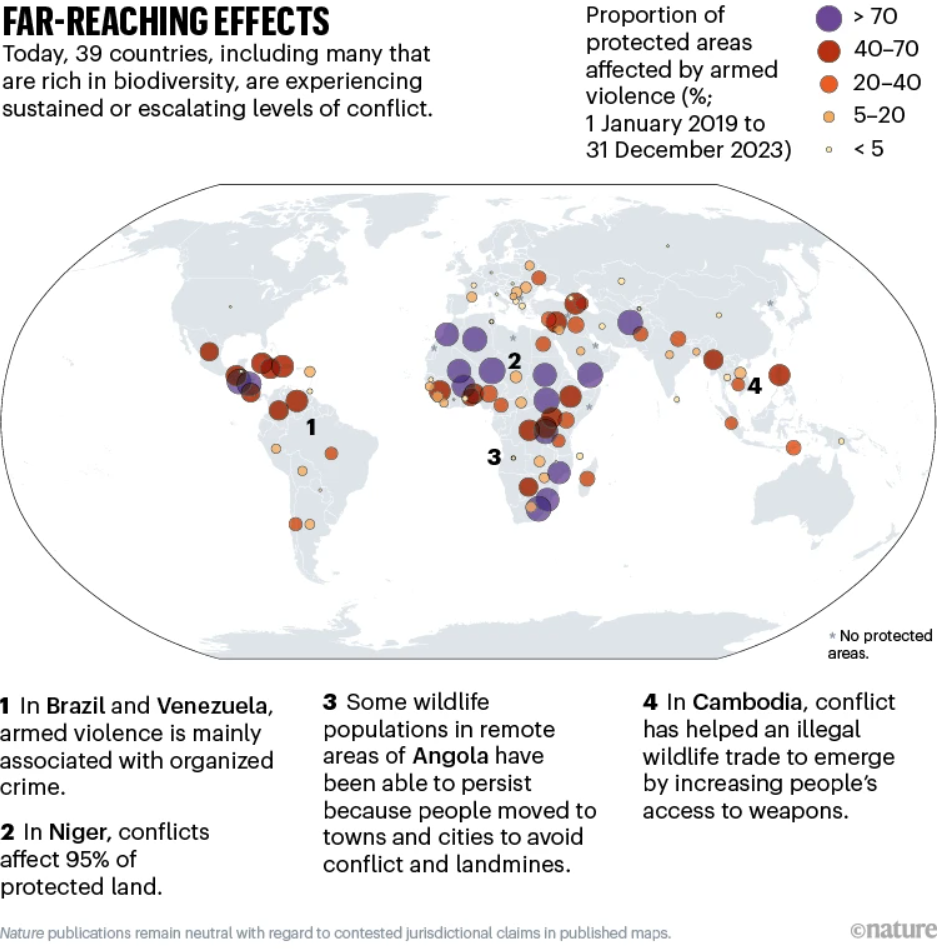Conservation Policies Must Address How War Affects the Environment
The impacts of armed conflict on biodiversity have long been overlooked. This article highlights the need for conservation policies to address the environmental harm caused by armed conflicts. The recent United Nations meeting in Colombia at COP16 emphasized the concept of “peace with nature,” encouraging nations to incorporate peacebuilding into biodiversity conservation.
Key Points
- Impact of Armed Conflicts on Biodiversity: Armed conflicts have affected biodiversity in many regions, with more than 80% of conflicts occurring in recognized biodiversity hotspots. Conflicts increase hunting, logging, and dependency on natural resources, contributing to biodiversity loss.
- Nature-based Solutions: The use of nature-based solutions, such as the Kibira Peace Forest project in Burundi, has helped in fostering social cohesion, reducing deforestation, and promoting peacebuilding in post-conflict regions.
- Challenges and Recommendations: Armed conflicts often weaken governance, leading to unsustainable exploitation of natural resources. Nations should include considerations for biodiversity conservation in National Biodiversity Strategy and Action Plans (NBSAPs), ensuring restoration supports peacebuilding.
- Role of Global Initiatives: International organizations like the Global Environment Facility have begun incorporating “conflict-sensitive” approaches to improve conservation outcomes in fragile states. More technical and financial support is needed for countries affected by conflict.
- Colombia’s Experience: Colombia, with its long history of armed conflict, has integrated environmental conservation into its peacebuilding processes. This approach provides an opportunity for the international community to adopt similar practices.

Summary
The article urges conservationists and policymakers to integrate the impacts of armed conflicts on biodiversity into global frameworks such as the Global Biodiversity Framework. War and conflict are major drivers of biodiversity loss, as they weaken governance and increase exploitation of natural resources. By addressing the link between biodiversity and conflict, and incorporating conflict-sensitive approaches into biodiversity conservation, nations can use environmental protection as a means to promote peace. The upcoming COP16 is a unique opportunity to focus on “peace with nature” and highlight conservation’s role in post-conflict recovery.
Based on an article published by Nature.







